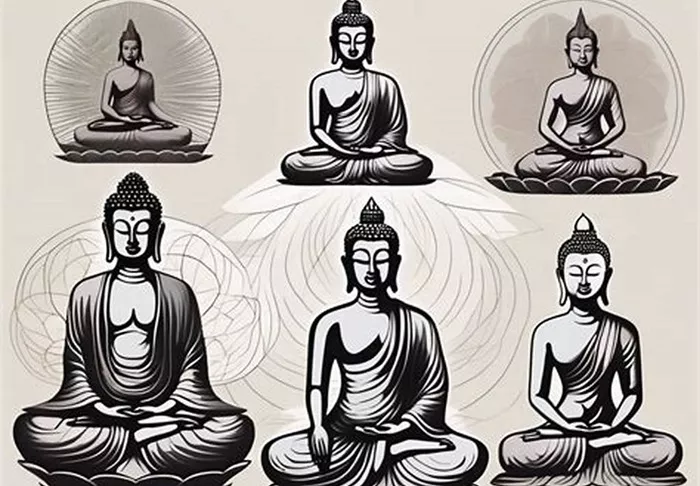The Buddha is a symbol that carries deep meaning. When people see images or statues of Buddha, they often feel peace and calm. But beyond this calmness lies a rich story of wisdom and compassion. These two qualities are the heart of Buddha’s teachings.
Who is the Buddha?
The Buddha was a man named Siddhartha Gautama. He lived more than 2,500 years ago in India. He was born a prince but left his royal life to find the truth about suffering and happiness. After years of meditation, he reached enlightenment—perfect wisdom and peace. From then on, he shared his knowledge with others to help them end suffering too.
Why is Buddha a Symbol?
Buddha is not just a person but also a symbol of what all humans can achieve. The Buddha’s image reminds us of the path toward wisdom and kindness. It shows us that no matter where we start, we can grow and learn to live with less pain and more joy.
Wisdom: The Light That Guides
Wisdom is one of the main symbols of Buddha. It means understanding the true nature of life. Buddha taught that life is full of change and suffering, but through wisdom, we can see how to be free from pain.
The Four Noble Truths
The heart of Buddha’s wisdom is the Four Noble Truths:
- The truth of suffering (Dukkha): Life has suffering.
- The cause of suffering (Samudaya): Suffering comes from craving and attachment.
- The end of suffering (Nirodha): It is possible to end suffering.
- The path to the end of suffering (Magga): Following the Eightfold Path leads to the end of suffering.
These truths guide us to understand life better and find peace.
The Eightfold Path: A Wise Way of Living
The Eightfold Path is the practical guide Buddha gave for living wisely. It teaches us how to think, act, and speak in ways that reduce suffering for ourselves and others. The path includes right view, right intention, right speech, right action, right livelihood, right effort, right mindfulness, and right concentration.
Compassion: The Heart of Buddha’s Teachings
Compassion is the second major symbol of Buddha. It means caring for others and wanting to help relieve their pain. Buddha showed great compassion by teaching everyone, no matter their background.
How Compassion Helps Us Grow
Compassion is important because it connects us to others. When we care for people, we open our hearts. This kindness helps us feel less alone and more peaceful. It also helps create a better world where people support one another.
Compassion in Daily Life
To practice compassion, we can start with small acts of kindness. Listening to someone who is sad, helping a neighbor, or being patient with others are ways to show compassion. Buddha’s teachings encourage us to extend kindness not only to people but also to animals and the environment.
The Symbolism in Buddha Statues
Buddha statues are more than just art. They carry many symbols of wisdom and compassion. Understanding these symbols helps us appreciate the deeper messages behind Buddha’s image.
Types of Buddha Statues
There are many types of Buddha statues, each with different meanings. Some show Buddha sitting, standing, or lying down. Each posture tells a different story about his life and teachings.
Sitting Buddha
The sitting Buddha often represents meditation and calmness. This statue shows Buddha in deep concentration, symbolizing the wisdom gained through meditation.
Standing Buddha
The standing Buddha statue can symbolize teaching and giving blessings. It shows Buddha sharing his wisdom and compassion with the world.
Reclining Buddha
The reclining Buddha statue represents Buddha’s final moments before passing into Nirvana. It reminds us of the peace that comes at the end of suffering.
Common Symbolic Features in Buddha Statues
- Mudras (Hand Gestures): Different hand positions symbolize different teachings. For example, the “Dharmachakra mudra” means turning the wheel of Dharma (teaching).
- Usnisha (Cranial Protuberance): The bump on Buddha’s head shows his advanced wisdom.
- Elongated Earlobes: These remind us that Buddha left behind his royal life and material wealth.
- Lotus Flower: Often seen with Buddha statues, the lotus symbolizes purity and spiritual growth, rising above the muddy water.
Why Understanding Buddha’s Symbolism Matters
When we learn the meaning behind Buddha’s image, we connect more deeply with his teachings. It helps us see the path of wisdom and compassion more clearly. This understanding can inspire us to live better lives and treat others kindly.
Bringing Buddha’s Wisdom and Compassion into Our Lives
We do not have to be monks or live in temples to practice Buddha’s teachings. Every day, we can apply wisdom by seeing things clearly and acting with kindness. This practice helps reduce suffering and brings more happiness.
Conclusion
The Buddha is a powerful symbol of wisdom and compassion. His life and teachings guide millions to find peace and freedom from suffering. Through understanding the symbolism in Buddha statues and the meanings behind his teachings, we can all learn to live more wisely and kindly.
By embracing these two qualities—wisdom and compassion—we walk the path to true happiness and help make the world a better place.

